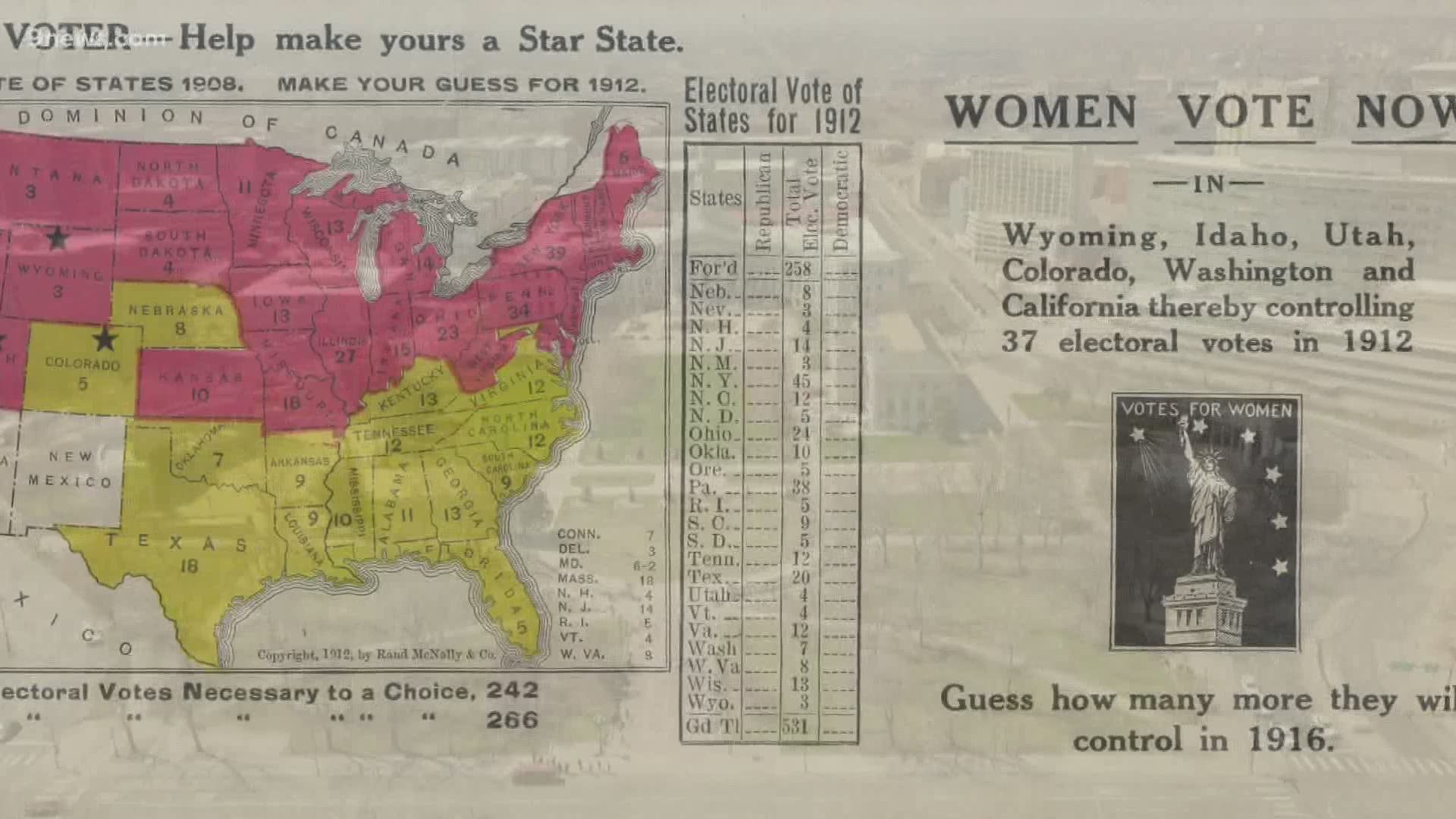DENVER — Tuesday marked 100 years since the 19th Amendment of the U.S. Constitution was ratified which gave women the right to vote.
But in 1920, Colorado was already ahead of the game. Like recreational marijuana and same-sex marriage, the Centennial State allowed women to vote long before it was legal at the federal level.
Wyoming, a then-territory, was the first to allow women to vote in the U.S. Colorado was second and used a popular referendum for women's suffrage in 1893.
"That was significant because it involved a campaign directly to voters rather than to legislators or lawmakers to make that decision," said Jillian Allison, director of the Center for Colorado Women's History.
Allison said, at the time, Colorado was going through an economic crisis and that there was "a silver panic." She also said the temperance movement was strong in the state and women's clubs existed where women had leadership roles and full participation.
"Women were also adept at working with the press and using the press to get their message out about women’s suffrage," she said.
Allison said Colorado served as an example for the rest of the country. However, change still had to happen state by state and that didn't come easy because of divisions that persist today like race and immigration.
A suffragette from Colorado helped push passed that by educating Black women across the country on why and how to vote. Her name was Elizabeth Ensley, a Black woman herself. She also helped lead the effort to allow women to vote in Colorado.
"She was a reporter for The Woman’s Era which was a paper for African-American women’s clubs throughout the nation," Allison said. "She had a voice here in Denver and on the national stage as well. So, she’s been recognized locally and on a national level. But there are still more people who could get to know her story."
Allison said one thing the Center for Colorado Women's History emphasizes in their exhibit about the Colorado women's suffrage movement and the 19th Amendment is that the amendment just removed one barrier and there were still people who were not able to vote after it passed due to discriminatory practices.
Native American women couldn't vote until 1924 and Chinese immigrants waited until 1943. Black women didn't get the right to vote until 45 years after the amendment passed.
"So the story doesn’t end in 1920," Allison said. "The fight for voting rights continues on past that point and up until today."
SUGGESTED VIDEOS: Feature stories

